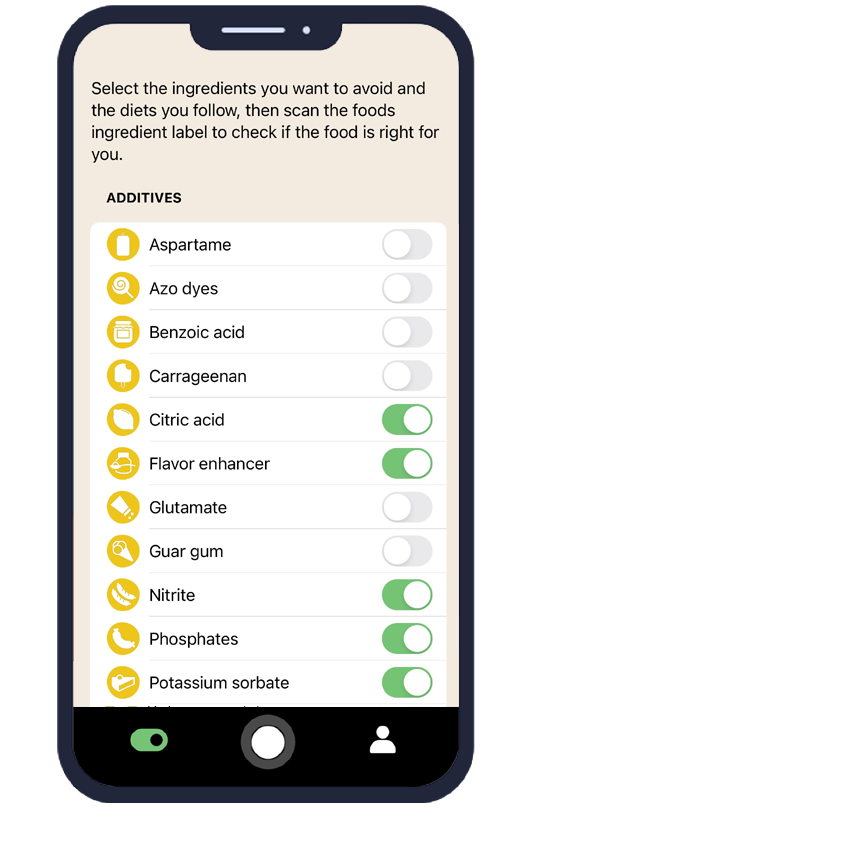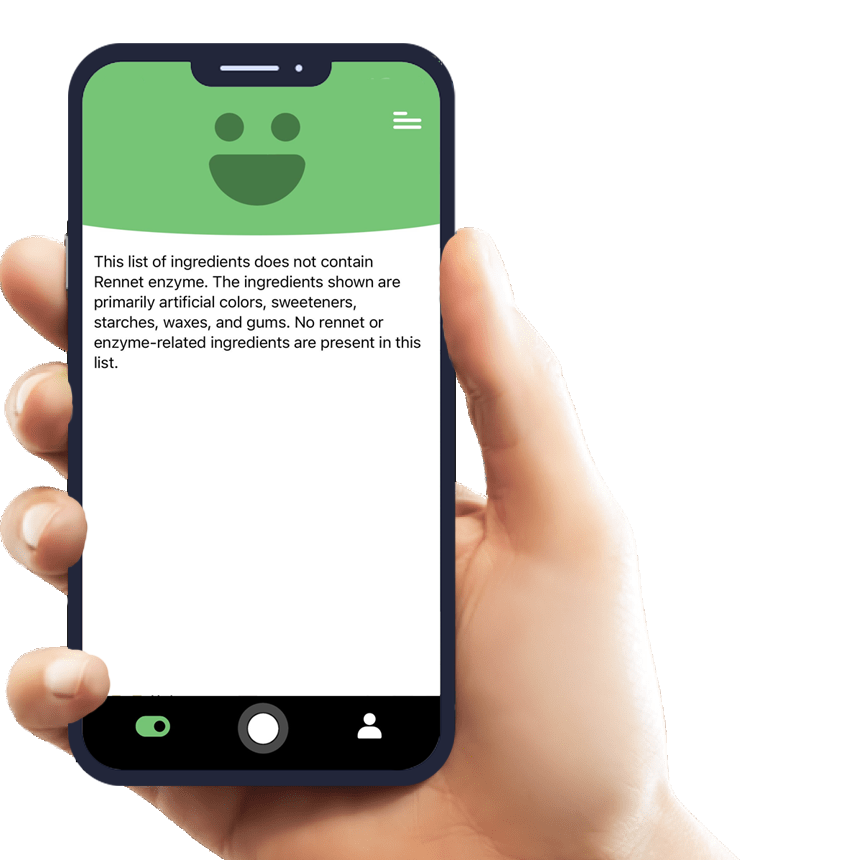Everything You Need to Know About Lentils and How AI Eat This Can Help You Avoid Them
Lentils are nutritious legumes that have become increasingly common in modern food products, but they can pose challenges for people with specific dietary restrictions. Whether you're dealing with legume allergies, following certain dietary protocols, or simply trying to avoid Lentils for personal reasons, identifying them in processed foods can be surprisingly difficult. The AI Eat This mobile app revolutionizes how consumers navigate these dietary challenges by instantly scanning ingredient lists and alerting users to the presence of Lentils in any food product.
Understanding where Lentils appear in our food supply and how to effectively avoid them is crucial for maintaining your health and dietary goals. This comprehensive guide will help you navigate the world of Lentils in food products while showing you how modern technology can simplify your shopping experience.
What Are Lentils and Where Are They Used in Food Products?
Lentils are small, lens-shaped legumes that belong to the pulse family, scientifically known as Lens culinaris. These protein-rich seeds have been cultivated for thousands of years and are now widely used in food manufacturing due to their nutritional profile and functional properties. Food manufacturers incorporate Lentils into products as whole ingredients, flours, proteins, and fiber supplements.
The versatility of Lentils makes them appear in unexpected places throughout the food supply. They're commonly found in protein bars, veggie burgers, gluten-free baked goods, and meat alternatives. Many processed soups, stews, and ready-to-eat meals also contain Lentils as a primary or secondary ingredient.
Common Foods Containing Lentils
Lentils appear in numerous food categories, often under various names that can make identification challenging. Here are the most common food products where you'll encounter Lentils:
- Plant-based meat substitutes and veggie patties
- Protein powders and nutritional supplements
- Gluten-free pasta and baked goods
- Canned and dried soup mixes
- Snack foods like chips and crackers
- Baby foods and purees
- Frozen meals and convenience foods
Are Lentils Safe? What Does the Research Say?
For the majority of people, Lentils are considered safe and highly nutritious by major health authorities. The U.S. Food and Drug Administration (FDA) recognizes Lentils as generally safe for consumption, and the European Food Safety Authority (EFSA) has established no specific intake limitations for healthy individuals.
The World Health Organization (WHO) actually promotes legume consumption, including Lentils, as part of a healthy diet due to their high protein, fiber, and mineral content. However, safety considerations become important for specific populations with dietary restrictions or health conditions.
Regulatory Approvals and Guidelines
Lentils don't require special approval as food additives since they're whole food ingredients. However, food labeling regulations require manufacturers to clearly list Lentils on ingredient labels when present. In many countries, including the United States and European Union, foods containing legumes must be properly labeled to help consumers with allergies make informed choices.
Risks for Specific Groups
While generally safe, Lentils can cause problems for certain individuals. People with legume allergies may experience allergic reactions ranging from mild digestive discomfort to severe anaphylaxis. Those following specific dietary protocols like certain autoimmune diets may also need to avoid Lentils due to their lectin content or other compounds.
How AI Eat This Helps You Avoid Lentils in Your Diet
The AI Eat This app transforms how people with dietary restrictions navigate grocery shopping and meal planning. This innovative mobile application uses advanced artificial intelligence to scan ingredient lists on food packaging, instantly identifying the presence of Lentils and other restricted ingredients.
The app's sophisticated scanning technology works with ingredient lists in multiple languages, making it invaluable for travelers or those shopping at international markets. Users can simply point their phone's camera at any food label, and the app immediately highlights problematic ingredients while providing alternative product suggestions.
One of the most powerful features is the personalized filter system that allows users to create custom dietary profiles. Whether you're avoiding Lentils due to allergies, following a specific diet plan, or managing multiple food intolerances, the app can be configured to match your exact dietary restrictions. This personalization ensures that every scan is relevant to your specific needs.
Who Should Consider Avoiding Lentils?
Several groups of people may need to avoid or limit Lentils in their diet. Understanding whether you fall into one of these categories can help you determine if using tools like AI Eat This would benefit your health management routine.
Individuals with diagnosed legume allergies represent the most critical group requiring Lentils avoidance. These allergic reactions can range from mild symptoms like bloating and digestive discomfort to severe anaphylactic responses requiring immediate medical attention. Cross-reactivity between different legumes means that someone allergic to peanuts might also react to Lentils.
People following certain therapeutic diets may also need to avoid Lentils temporarily or permanently. Some autoimmune protocols restrict legumes during elimination phases, while individuals with specific digestive conditions might find that Lentils trigger uncomfortable symptoms due to their high fiber and complex carbohydrate content.
Practical Tips for Maintaining a Lentils-Free Diet
Successfully avoiding Lentils requires a combination of label-reading skills, product knowledge, and strategic shopping habits. The most effective approach involves becoming familiar with alternative names and forms that Lentils might take on ingredient labels.
Always read ingredient lists carefully, as Lentils might appear as "lentil flour," "lentil protein," or simply as part of a "vegetable blend." When dining out, don't hesitate to ask servers about ingredients, especially in vegetarian restaurants where Lentils are commonly used in various dishes.
Focus on whole, unprocessed foods when possible, as these are less likely to contain unexpected Lentils. Fresh fruits, vegetables, plain meats, and simple grains typically don't contain hidden legume ingredients. When you do purchase processed foods, stick to brands that clearly label all ingredients and avoid products with vague terms like "natural flavors" or "spice blends."
Consider using the USDA's nutrition resources to learn about Lentils-free alternatives that can provide similar nutritional benefits. Many other protein sources and fiber-rich foods can replace the nutritional value that Lentils typically provide in a balanced diet.
The Future of Dietary Management with AI Technology
Technology continues to revolutionize how we manage dietary restrictions and food safety concerns. AI-powered apps like AI Eat This represent just the beginning of how artificial intelligence can support healthier eating habits and improved quality of life for people with food allergies and intolerances.
The ability to instantly scan and analyze ingredient lists removes much of the guesswork and anxiety associated with grocery shopping for people avoiding specific ingredients like Lentils. This technology becomes particularly valuable as food manufacturing becomes more complex and ingredient lists grow longer and more technical.
Conclusion
Managing a diet that excludes Lentils doesn't have to be overwhelming or restrictive. With proper knowledge about where Lentils commonly appear in food products and the right tools to identify them, you can maintain your dietary restrictions while still enjoying a varied and nutritious diet.
The AI Eat This app provides an invaluable resource for anyone needing to avoid Lentils, whether due to allergies, dietary restrictions, or personal preferences. By combining traditional label-reading skills with modern AI technology, you can shop with confidence and maintain your health goals more effectively.
Take control of your dietary management today – Download AI Eat This for free testing and experience how technology can simplify your Lentils-free lifestyle!

70 filters
With over 70 filters, you can easily avoid certain ingredients and follow your dietary preference.

Paleo

Pescetarian

Ultra-processed food

Vegan







































































